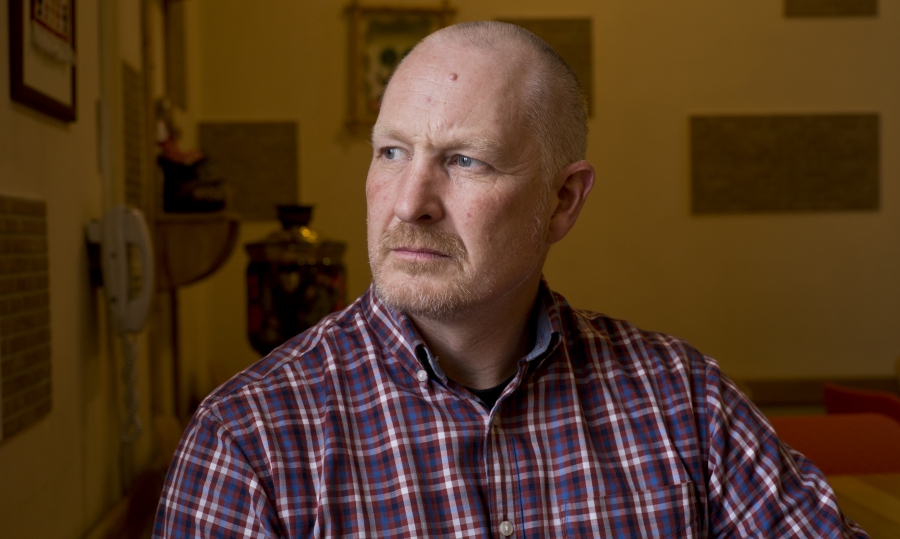Steve Cook, the director and co-owner at TYR Solutions, is a media security advisor and an experienced television field producer, having worked for many of the major international television networks and European and North American news bureaus.
Recently he covered major breaking news stories in the Middle East, North Africa and Central Asia often working under very difficult conditions to get the story to air in countries such as Syria, Lebanon, Jordan, Turkey, Kurdistan, Iraq, Tunisia, Egypt, Libya, Pakistan, and Afghanistan for CNN, CBC, CBS, NEWS International and many other TV production companies.
“I have been supporting media and NGOs both consultancy on the ground and as a training provider for 12 years.
“Recently, one of the dangerous areas I worked in was Mosul, where you had to be aware of everything. With the Mosul story, we were with Kurdish fighters when we started reporting; they had their way of operating and working. Then we had to change sides, and it was not easy and caused some problems. This taught us that you have to be ready and have plans to change your environment,” he says.
Steve has been in military for 16 years and then worked as a police officer for a short time. During the second Iraq War he worked as a security guard and then received an offer to work with media.
“I liked it, doing a different story every day. So, I started working full time with media and over time, with all types of media. I now do trainings, advisory and producing,” says Cook.
New technologies, new reality
“The way we operated 10–12 years ago was different: we had less technical equipment, we would have more maps and compasses, would use a GPS to send our coordinates. Now we have tracking systems, mobile phones, etc., a lot more, if you like, that can support covering media stories.
“If you buy a basic car, there is less that can go wrong with it. The more technical the car gets, the more things can go wrong. The digital era affects the work of journalists and the media as a whole. Now we don’t just go out, get the story, come back, edit the story, and file. Journalists have to tweet from there, do daily diaries and report progress every day.
“When technology gets made to assist something, then the reverse action alert is that it can be used against us: we can be tracked, we can be watched.
“We supported a media story providing tracking and communications for a journalist to cover a story in Syria. He didn’t use any phones or anything else, he went in for two weeks with just a secure tracker. He went out, did his story and won an Emmy award. So it has uses. He wasn’t monitored or watched on an electronic level.
“On a bad level, people can become too reliant on it. We had an example in Mosul just recently where I was with a media organization and, unfortunately, some of the crew got cut off and they were surrounded by ISIS and stuck. They were tracked by mobile phones. But once the power ran out, we lost everything.”
Tracking systems are a good aid, but we should really know how to do some basic things as well.
The organization Steve leads does a four-day hostile environment course that covers everything from first aid to tracking systems, how to cover protests safely, planning and preparation, technical security.
“Every journalist should do it if they intend to work in a hostile environment. We are doing also some refresher training. There might be cases when media organizations have the crew go somewhere specific, so the crew will need couple of days of training specific for the environment they are going to work in.
“It is all about the environment and that’s one of the key things that our work is about.”
The most dangerous work
Freelancers, print people, and photographers can get a lot more answers because they are on their own, and with a fixer they can go in and out to a lot of places much easier.
The camera operator’s job is the most dangerous as he loses the wider picture, his focus is through the lens. So when I am working with a crew I stick more to the camera operator.
Fixers are also important, they are usually chosen through word of mouth, but something that can work for one can be a wrong decision for others. Thus, to make sure everything is set, you have to select a couple of fixers and interview them in advance to make a better choice.
Plan, plan, and plan again
Think about all the “what if’s.”
Things do change on the ground, so the plan should also be flexible.
Make sure somebody knows what your intentions are.
As journalists, you are not there to be part of the story but to tell the story, so you need to make sure you are safe to cover it.
If you are working alongside a military unit, think if doing so is worth it and ask relevant questions: if you get shot, is there a medical unit?
All journalists should really have their own safety equipment
Media organizations should provide journalists with body armors and helmets. It is down to the editors and bosses. They have to have the duty to care for their journalists. They should be buying each individual field journalist his or her own equipment, so it fits properly, so it’s adequate; medical kits, safety equipment, body armor, helmet, they should provide all this stuff to their staff. You wouldn’t expect a soldier that goes out on the battlefield to buy his own equipment.
Sara Khojoyan






